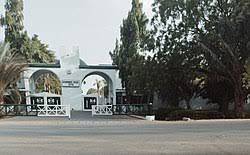In Jigawa State, Nigeria, with its population of about 7.5 million, the fight against child mortality is centered on securing basic rights to life, health, and protection. For many families in Jigawa, these rights are not only hard to achieve but also seem like distant luxuries. This struggle is worsened by poor healthcare facilities, lack of transport fare and sometimes the poor attitude of health workers towards patients. In this report, Gom Mirian delves into these issues, from troubling statistics to transformative efforts ensuring every child’s right to health and life is protected.
A State in Crisis
Jigawa State has long grappled with some of Nigeria’s most alarming socio-economic indicators. Data from the National Bureau of Statistics categorised it among Nigeria’s poorest states. Its literacy rates are among the lowest, and its child nutrition indicators are stark, with a stunting rate of 54%, one of the highest in the country, according to the 2018 Multiple Indicator Cluster Survey (MICS). The state also faces severe health challenges, including a high total fertility rate of 8.4 % and minimal contraceptive use, according to the 2018 National Nutrition and Health Survey, painting a grim picture of the challenges faced by its vulnerable population.
In 2021, the gravity of Jigawa’s health crisis was underscored by the tragic deaths of at least 65 children across 14 Local Government Areas (LGAs) due to meningitis. Many survivors suffered permanent disabilities, according to media reports, highlighting a dire need for effective preventive measures.
To change this narrative, in 2022, the United Nations Children’s Fund, (UNICEF) in partnership with the Jigawa State Primary Health Care Development Agency (JSPHCDA) and funded by the GAVI vaccines alliance, launched strategic initiatives and targeted interventions. These organisations have been instrumental in driving positive change and improving health outcomes for the most vulnerable populations in Jigawa and seven other states; Bayelsa, Gombe, Katsina, Kebbi, Niger, Taraba, and Zamfara.
Despite the bleak landscape, Jigawa State has seen a remarkable increase in immunisation coverage in recent years. It rose from a mere 2% in 2016-2017, according to the Multiple Indicator Cluster Survey (MICS) to 23.8% in the 2018 Nigeria Demographic and Health Survey (NDHS). By the end of the first quarter of 2023, the Jigawa State Primary Health Care Development Agency (JSPHCDA) survey reported a 49% coverage rate, marking a notable achievement in child health. This success is partly due to the distribution of 420 motorbikes and 13 vehicles to bolster routine immunisation (RI) and primary healthcare (PHC) services in states.
Voices from the Field: Mother’s Testimonies
During a visit to the Sakwaya primary healthcare center in Dutse LGA, our correspondent encountered mothers whose lives had been touched by the immunisation initiatives.
Salamatu Hamisu, a 25-year-old mother of two, shares her experience with the new health initiative. She travels over 55 kilometers from Garko to the Sakwaya center for her 15-month-old daughter Hawua’s vaccinations. “Honestly, I now feed my two children well, all thanks to this intervention,” says Hamisu, whose transportation to the health center used to be a significant burden.
“Now, I receive six thousand Naira after vaccinating my child, which helps sustain my family. There’s no reason to miss immunising my baby,” Hamisu explains.
Zakiya Nasir, an 18-year-old mother from Jandu, a remote area 6 kilometers from Azani LGA, also expresses her gratitude for the support she receives. “This is my first child, and I learned about routine immunization through Jakadan Lafiya, a health ambassador who educated me and my family about its importance. Even though the transportation support is helpful, we would still bring our child for immunisation because we understand its value.”

Zakiya Nasiru at the Andaza Primary Healthcare Centre with her son Rabilu for vaccination
(Photo credit: Gom Mirian/AHR)
Hawua Yusuf Ahmed, in charge of the antenatal care unit at the Sakwaya centre, highlights the broader improvements. “The turnout of women and caregivers has increased significantly. We now conduct immunisation sessions three times a week, each serving no less than 50 caregivers and their babies,” Ahmed notes, “Before, we could only manage about 20 persons per session once a week.”
She pointed out, “Before the GAVI intervention, patient attendance was low, and frequent power outages made night-time care challenging. With GAVI’s support, we now have consistent electricity and trained health workers stationed on-site, and people now have confidence that they can be attended to at any time of the day. So honestly, there is an increase in attendance and much-improved services.”

A trained healthcare worker giving a health talk to caregivers at Sakwaya Primary Healthcare (credit: Gom Mirian/AHR)
Empowering Communities: The Jakadan Lafiya Initiative
The provision of motorbikes has allowed the JSPHCDA to extend its reach to more remote areas, crucial in a state where geographic isolation often limits access to healthcare.
One of the key elements in Jigawa’s success in the immunisation effort is the Jakadan Lafiya initiative. This grassroots approach involves engaging community members as health ambassadors to drive awareness and acceptance of immunisation even in hard-to-reach areas.

Mohammed Wada, a health ambassador under the Jakadan Lafiya initiative holds a routine immunisation settlement register. (Credit: Gom Mirian\AHR)
Mohammed Wada, a Jakadan Lafiya in the Andaza ward at the Kiyawa local government area, has been instrumental in increasing immunisation uptake, he expressed his passion for improving healthy living in his community.
“It pains me to see children suffering from disabilities that could have been prevented with vaccines,” Wada reflects. “I volunteer my time to ensure every child receives their vaccinations. However, the rising costs of inflation make it challenging and additional financial support would help us reach more areas.”
Despite the strides made, there is room for further development. The involvement of female health ambassadors could enhance outreach, particularly in maternal health and family planning. This could address gaps in services for women and improve overall health outcomes in Jigawa.
In an interview with Africa Health Report, (AHR), Dr. Shehu Sambo, Director of JSPHCDA, highlights the significance of these efforts. “In the 2016 Multiple Indicator Cluster Survey, our Penta 3 coverage was just 7%. By 2021, we had a 700% increase, reaching 49%. This improvement is unprecedented in Jigawa. We never had double-digit immunization coverage until we received substantial funding.”
He adds that GAVI’s funding allowed them to engage more midwives and train frontline healthcare workers to serve hard-to-reach areas. “We increased our midwives from about 120 to over 500. Skilled birth attendance has risen from less than 20% to nearly 60%. Every woman who delivers in a well-run facility has a greater chance of postnatal care and immunisation for her baby.”
Dr. Sambo also acknowledges the challenge of reaching nomadic populations. “Previously, tracking and reaching nomadic populations was difficult. However, with the donation of motorbikes and vehicles, we are now able to reach these populations more effectively.”
A Beacon of Hope
In the face of adversity, Jigawa State stands as a symbol of hope. Collaboration, innovation, and community engagement have come together to transform lives and secure a brighter future for its youngest residents. The state’s journey towards sustainable health outcomes showcases the impact of dedication and partnership.
This report captures the essence of Jigawa’s progress. Through the lens of human interest and storytelling, it highlights the community’s journey towards better health. The dedication of those involved in the immunisation efforts reflects a powerful narrative of resilience and hope, illustrating the positive change that targeted interventions and collaborative efforts can bring to communities in need



